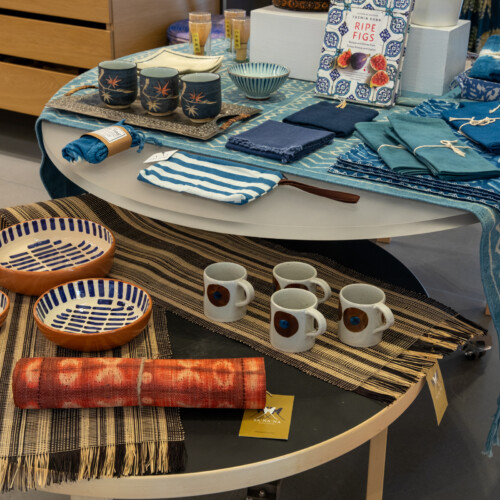Sunlight reflects off the copper edge of the studio roof, creating patterns of light on the concrete nearby. The warmth of the wood in contrast to the cool-toned ground balances nicely. The first element to catch our attention is the handle to a storage cabinet—bronze, inlaid into the rich wood. Although we’re impressed by its custom form, she covers it humbly and smiles. “I wasn’t totally happy with that one.” She’s currently working on a mock up for a replacement. On a piece of paper, she sketched an angular model with space to feature a brilliant, green Turtleback Variscite stone. “I found this cool stone, which is what started it. I like to look at [the stones] for a while and think, ‘What does this guy want to be?’”
Stones are a large part of Carmen’s jewelry practice, and her visit to the Tucson Gem and Mineral Show provided a wide array of new materials for her to experiment with. “I really love getting [stones] from small miners and lapidary people in the U.S. That’s what I love about Tuscon—the people who are selling it are the people that have actually unearthed it and formed it into something that is usable in jewelry, which I really dig.” As she unwraps a rainbow of stones, her excitement is contagious. Each one reflects light in magnificent ways, and the possibilities for their future settings are intriguing. She shows us rough blue lapis, green variscite, and deep purple sugilite. “There are stones that I tend to like more, like these deep speckled ones. I like the darker colors. I think they offset the bronze really nicely.” She holds a mojave desert chalcedony pebble in an outstretched palm, and the sunlight makes it almost translucent.




















